How to grow quinoa – all you need to know about this popular supergrain
Discover how to grow quinoa for a filling superfood that is hardy, drought resistant, protein rich and easy to care for
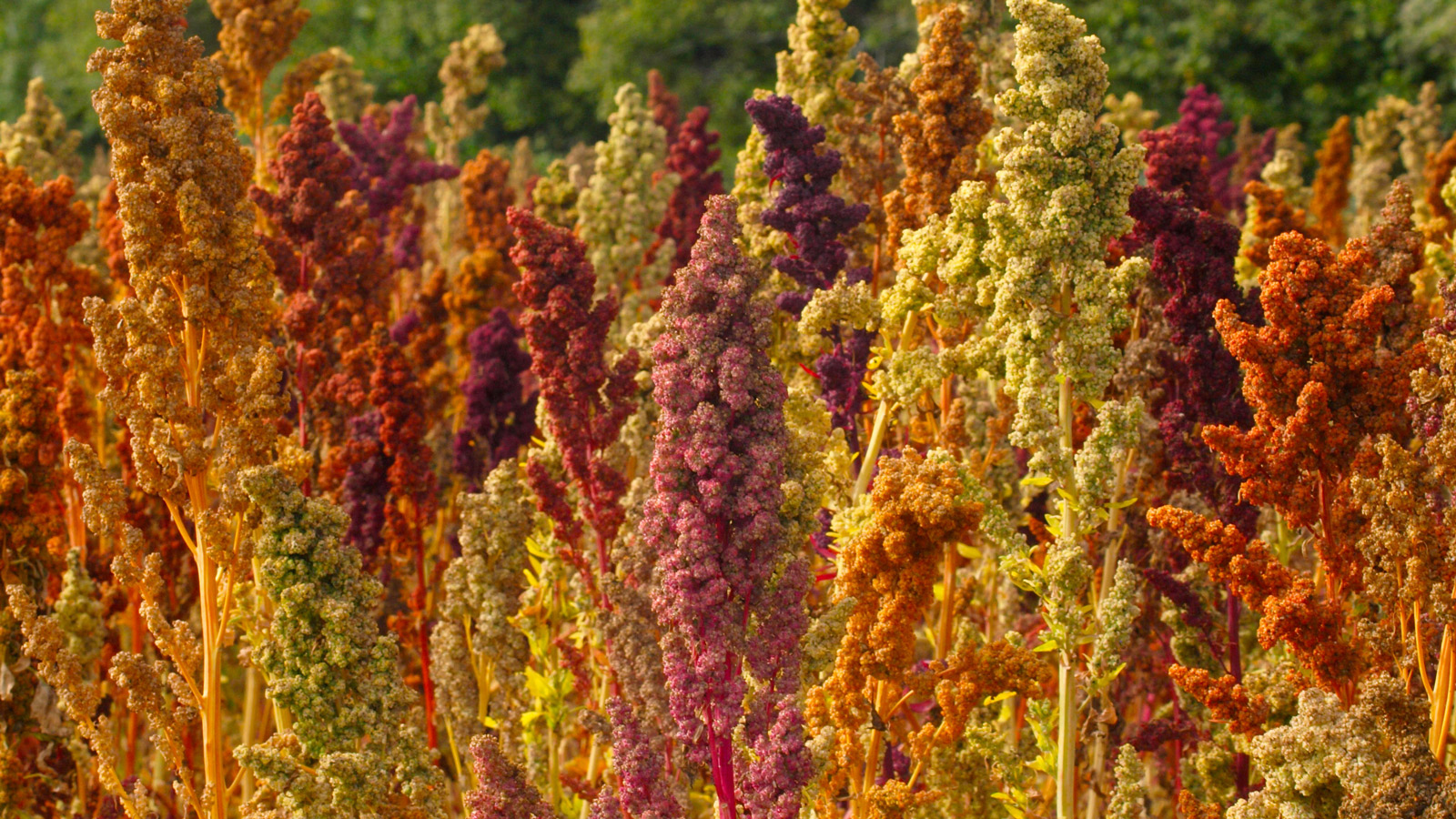

If you know how to grow quinoa, you’re given an ‘access all areas’ pass to one of the most nutritious, drought-tolerant grain crops there is. Quinoa (Chenopodium quinoa) is acknowledged as a ‘supergrain’, but is actually a seed crop (part of the Amaranthaceae family).
Pronounced ‘keen-wah’, it is called a pseudocereal grain because it is eaten like a cereal and can be ground into flour, as well as being cooked like rice or cous-cous, plus its leaves can be consumed like spinach. All that, and this superfood can be cultivated in a variety of tones, with multi-toned seed heads that add a rainbow of color to any vegetable garden or ornamental bed.
This protein-packed crop is a rich source of fiber, iron, magnesium, zinc and potassium. Quinoa is also loaded with antioxidants and is gluten-free, making it a versatile kitchen garden staple for the health conscious and wheat-intolerant. While it seems a modern-day phenomenon, this cool-season crop has a nutritional heritage dating back centuries. Venerated as a sacred food by ancient Inca tribes, quinoa (aka ‘Inca wheat’) is referred to as the ‘mother of grains’. It’s also easy to grow and it rewards patient cultivation with months of tasty harvests.
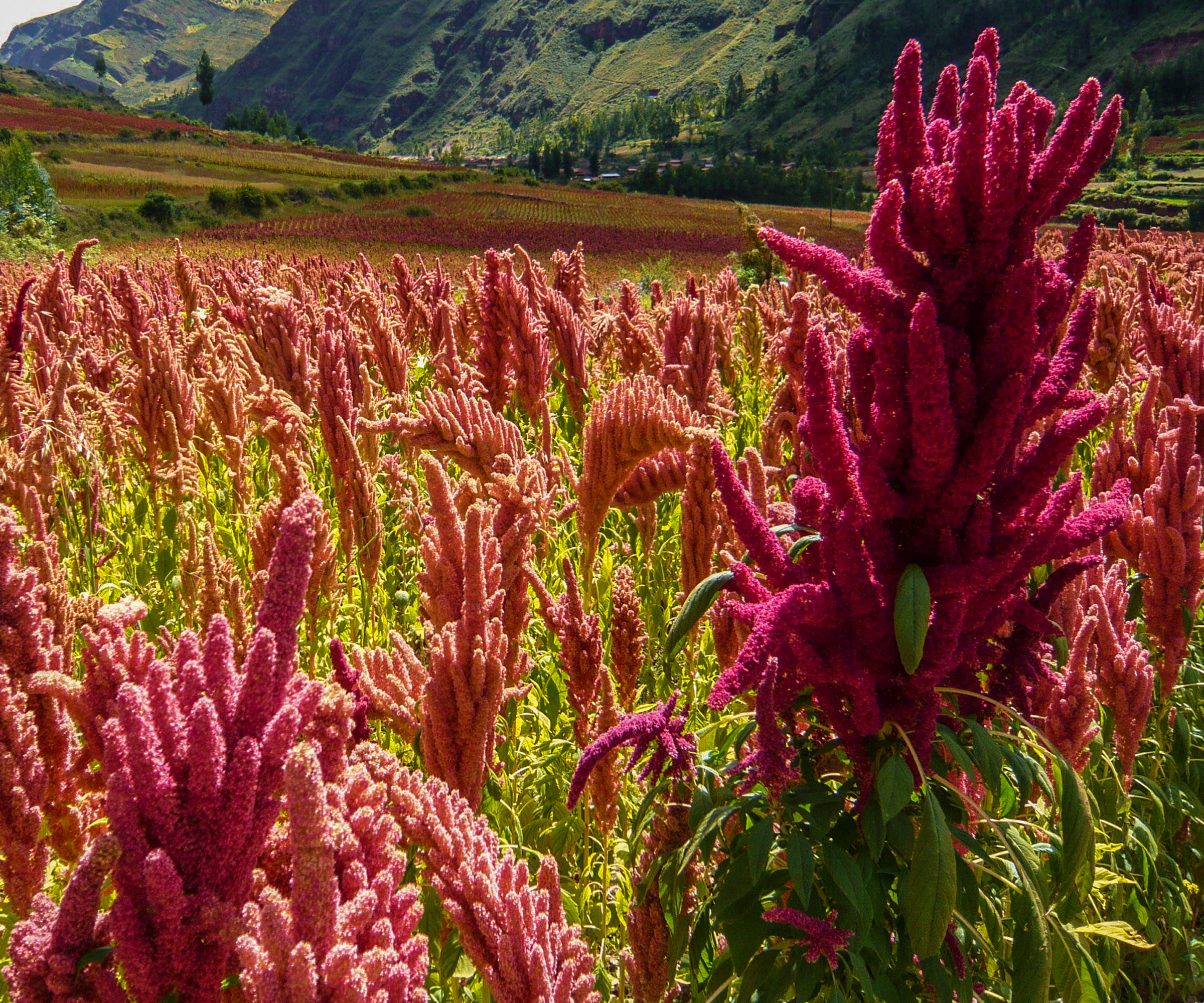
Originating in the cool high mountains of Peru, quinoa does well in sunny yet cool conditions

Janey has been assistant editor of Amateur Gardening magazine for five years. She has taken an active role in a series of conservation, urban renewal and rewilding projects for the RHS and TCV. She has been gardening from an early age, when her mum had her deadheading hydrangeas, mulching roses and propagating strawberry plants from runners for school open days. Here she explains how to get started with quinoa and the steps you need to take to cultivate healthy crops.
Ideal conditions for growing quinoa
Growing quinoa with confidence relies on just a few simple gardening measures – but also an understanding of its native preferences and conditions. These are potentially some of the easiest vegetables to grow if you are able to provide conditions reminiscent of their origins in the Peruvian mountains.
This isn’t as daunting as it sounds: they like full sun but are also primed to deal with fresh altitudes and cooler climates. And no, this doesn’t mean you have to grow crops at great heights! It just means that, as well as needing exposure to a few hours of sunlight per day, cool-climate loving quinoa plants need partial shade to protect them from possible extremes of heat.
Quinoa plants do best in well-drained, fertile soil with a pH of around 6-7, although they are adaptable; it’s a good idea to check soil types if you are not sure, and amend pH accordingly.
They are known for being drought-tolerant, but they appreciate regular watering (as long as you prevent waterlogging and overwatering). If you are worried about your soil, grow in a raised bed of some kind. Since these plants are capable of growing several feet high, it’s also important to place them somewhere they can enjoy a certain degree of space and freedom, whether that’s at the back of ornamental beds or borders or as part of a kitchen garden.
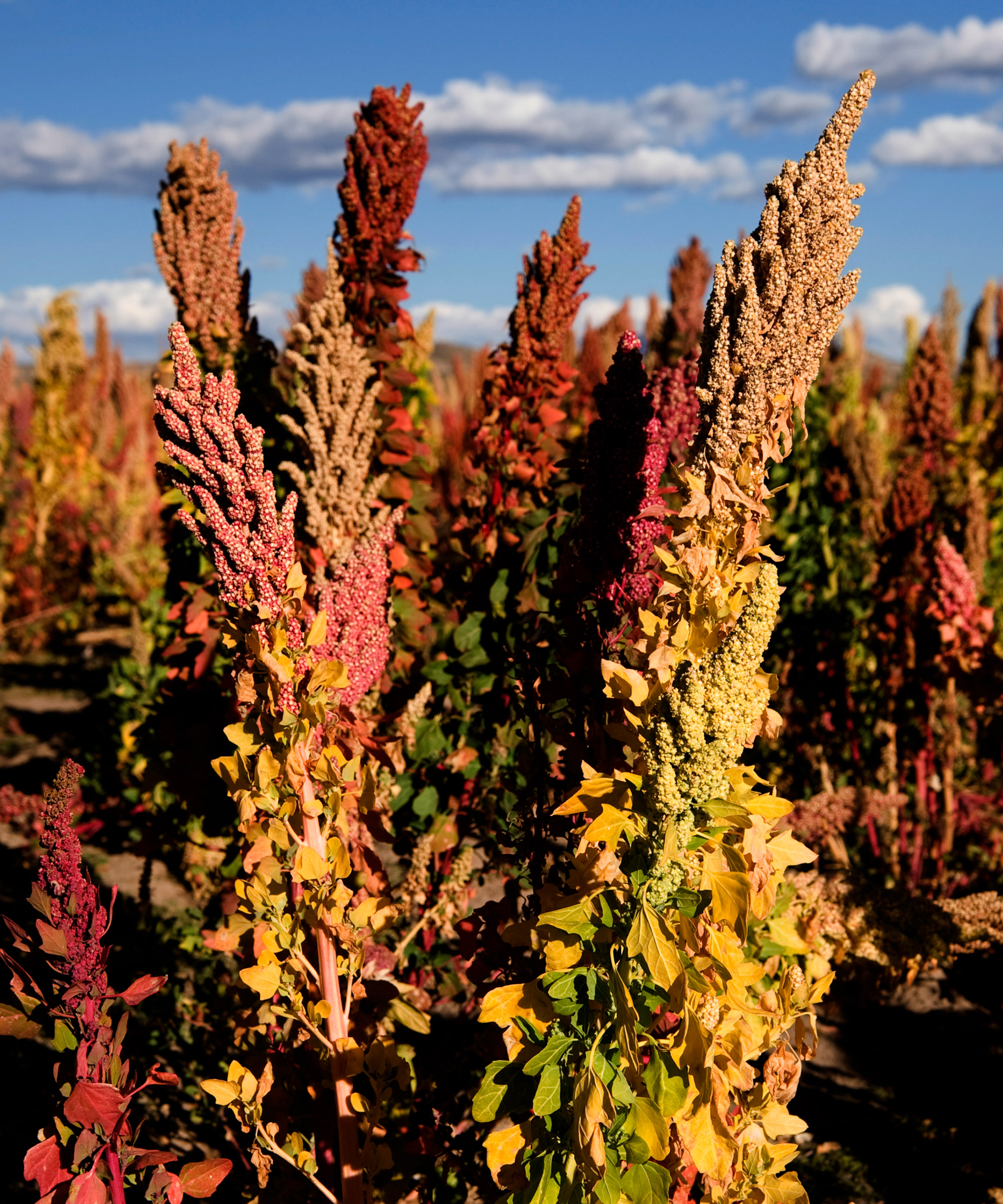
Quinoa can reach 4ft tall (or higher) so give plants plenty of space and grow in fertile, well-draining soil
When and how to grow quinoa
Growing quinoa relies on sensible timing. April is the best time for planting, although there is a little wiggle room here, depending on conditions in your area. As we have said, quinoa originates in parts of South America where the days are relatively short, bright and sunny. These cool-climate annuals are hardy, but they are best planted outside once there is less risk of being stopped in their tracks by harsh extremes of weather. If you think there is a chance of this happening, protect plants from frost with some sort of covering, cloche or cold frame.
The ideal temperature range for growing plants is 55-90˚F, and you should be making sure they are placed somewhere it won’t ever get colder than 25˚F at night. Quinoa plants do best in USDA hardiness zones 4-10, and require three-four months to fully mature. In order to avoid extremes of weather at the other end of the scale in high summer, you could start plants under glass a little earlier than April so seed heads are given more time to develop while conditions are more temperate. While quinoa plants make excellent options for drought-tolerant planting, it’s best if growing crops can take full advantage of cooler spring weather before things heat up.
Quinoa is available in burgundy, magenta, copper and gold. The main types are described as ‘white’, ‘red’ and ‘black’ – but expect a broad range of hues. They can be sown and planted at the same time as each other, based on your gardening zone and growing window.
Several varieties are a mix, creating highly ornamental displays as well as nourishing crops. Popular mixed varieties include ‘Brightest Brilliant’, ‘Rainbow Mixed’ and ‘Cherry Vanilla’. If you are after something more dramatic, ‘Shelly Black’ adds a splash of deep purple to dishes, while ‘Buffy’ and ‘French Vanilla’ caters for quieter tastes. And if you suspect you have a shorter growing window, ‘Biobio’ is a shorter, high-yielding early variety.
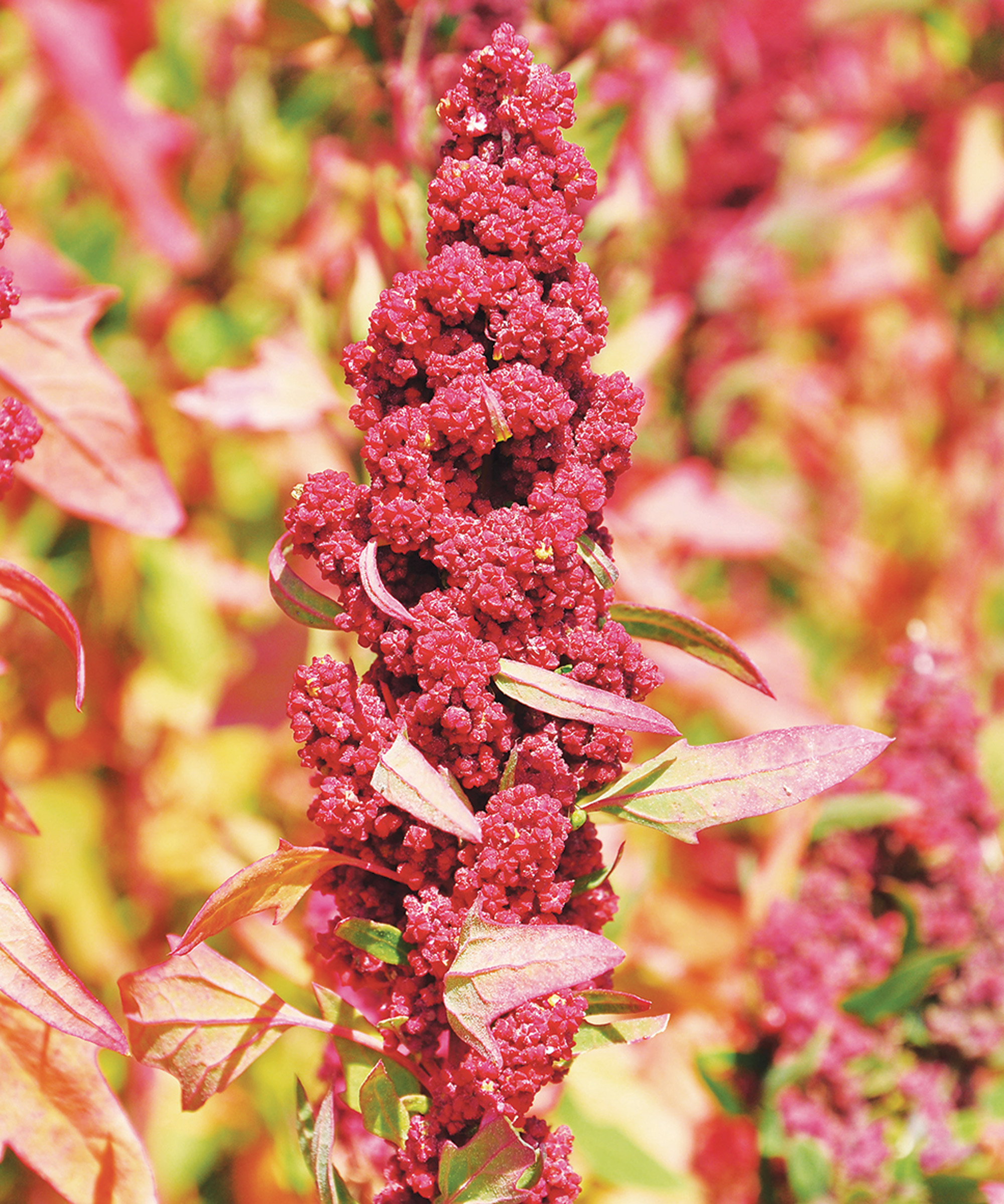
Several varieties such as ‘Cherry Vanilla’ develop scarlet and magenta seed heads
How to plant quinoa from seed
You can grow quinoa from seed either under glass or direct outdoors. In either situation, prepare the planting site with a little aged compost or organic material a few weeks beforehand.
Sowing under glass can help in areas where there is the risk of a small growing window, allowing slightly longer for the seed heads to mature once you transplant seedlings outside.
If you do start some quinoa indoors, keep in pots in a sunny, sheltered spot until they can be moved outdoors. However, Homes & Garden's veg expert Lucy Chamberlain recommends direct-sowing in a sunny, sheltered spot if sowing in April. Follow these guidelines:
- Sow in drills a quarter of an inch deep. Make sure the earth is moist and sow thinly (with seeds at 2in intervals). Cover with a light soil and water in. Spray daily with water until germination occurs (in a week).
- Cover seedlings with a polytunnel, cold frame or cloche to prevent damage if there is a chance of hard frost. Remove this cover once the risk of frost has passed and before any noticeable growth spurts.
- Thin once seedlings are a few inches tall, making sure remaining plants are spaced 12-18in apart. This is a good time to add a light mulch around developing plants to preserve moist conditions in the ground.
- Keep the soil just moist as plants develop, waiting until the top layer is dry to the touch before watering again. As long as the earth is well draining, it’s fine to water every few days as things warm up.
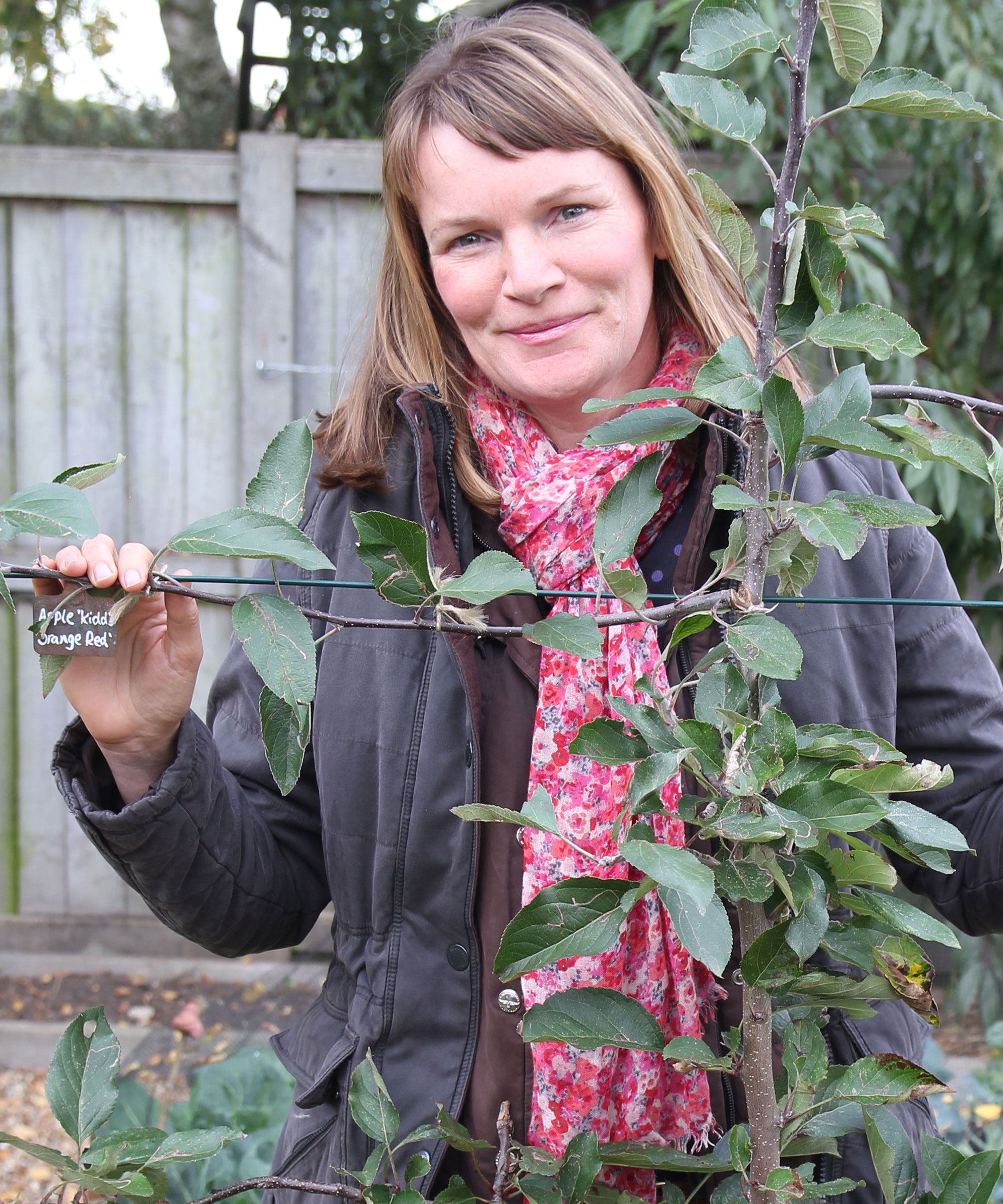
Lucy was a Horticultural Advisor at RHS Wisley and has been Head Gardener on a 100-acre estate in England for many years, but writes regularly for titles such as The Garden, Gardeners’ World, The Guardian and Amateur Gardening. She’s also the author of RHS Step by Step Veg Patch, which covers 50 types of fruit and veg.
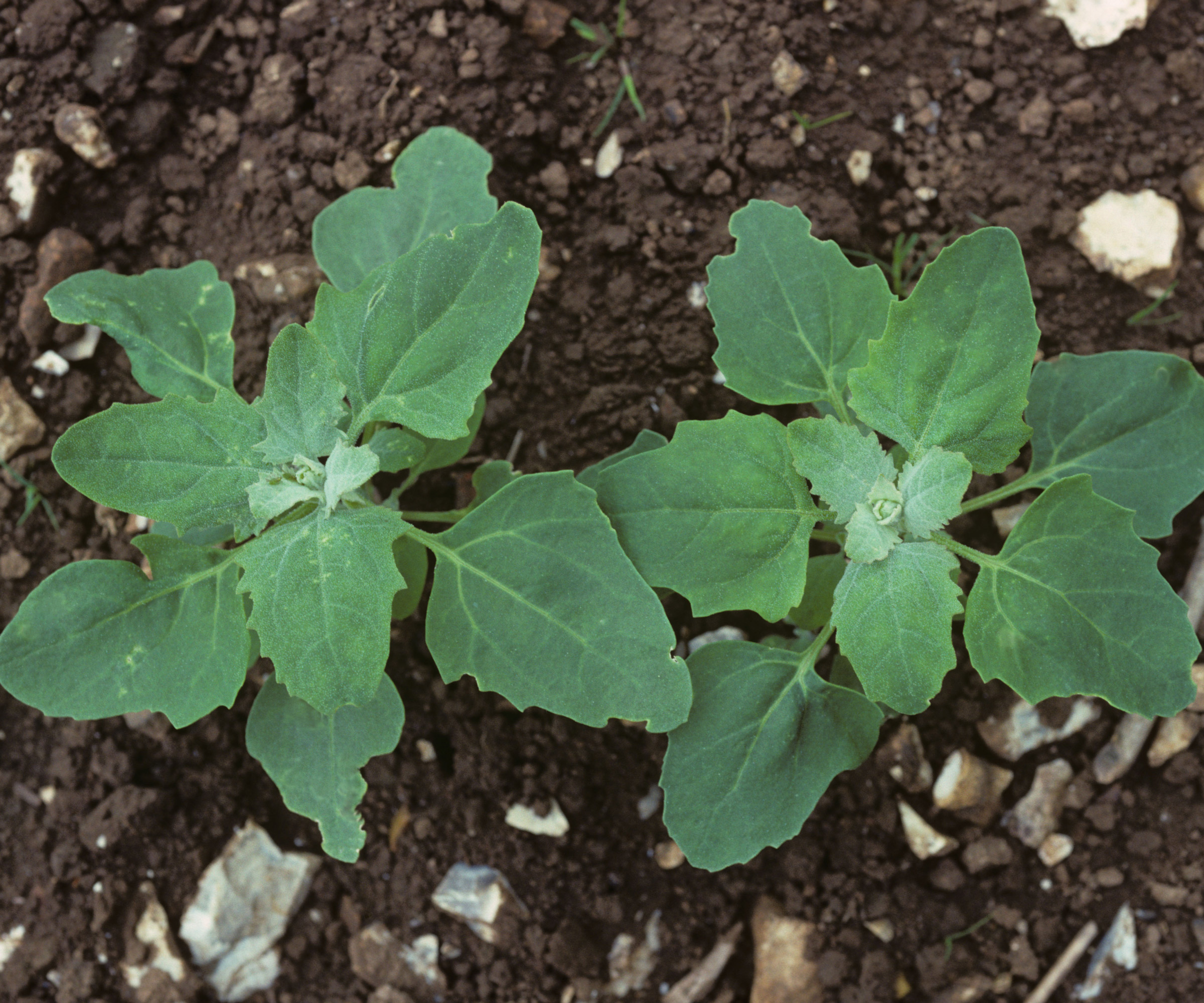
Once your quinoa seedlings have germinated, your plants will benefit from being weeded regularly
Caring for quinoa
Once you know how to grow quinoa, they are straightforward to care for in the right spot. They won’t require lots of attention, as long as you have thinned the plants and given them space to develop root systems and grow tall. You just need to check a few essentials to ensure they stay healthy and develop the best seed heads.
While they are hardy and drought resistant, it’s good to water plants at regular intervals, but wait until the top level of soil is dry to the touch. Water lightly and often, in the morning or early evening, and stop once seed heads thicken up. A balanced slow-release liquid feed at planting, and again four weeks later, can foster healthy roots – but don’t overfeed, as this can affect yield.
You will need to keep an eye on weeds in May. Aim to get rid of weeds by hand, but take care not to dislodge the young quinoa plants. A good mulching will help reduce the risk of weeds taking hold, and is also a good way of ensuring moisture levels are regulated underground. This is less of an issue as the quinoa get taller, since they cast more shade on the ground.
When plants are a couple of feet tall, secure them to stakes or similar supports, but take care not to disturb growing root systems. Other than that, this is an easy cool-season crop and gets on well alongside several crops as well as ornamentals. Fans of companion planting will find quinoa does well growing alongside garlic, corn and mint.
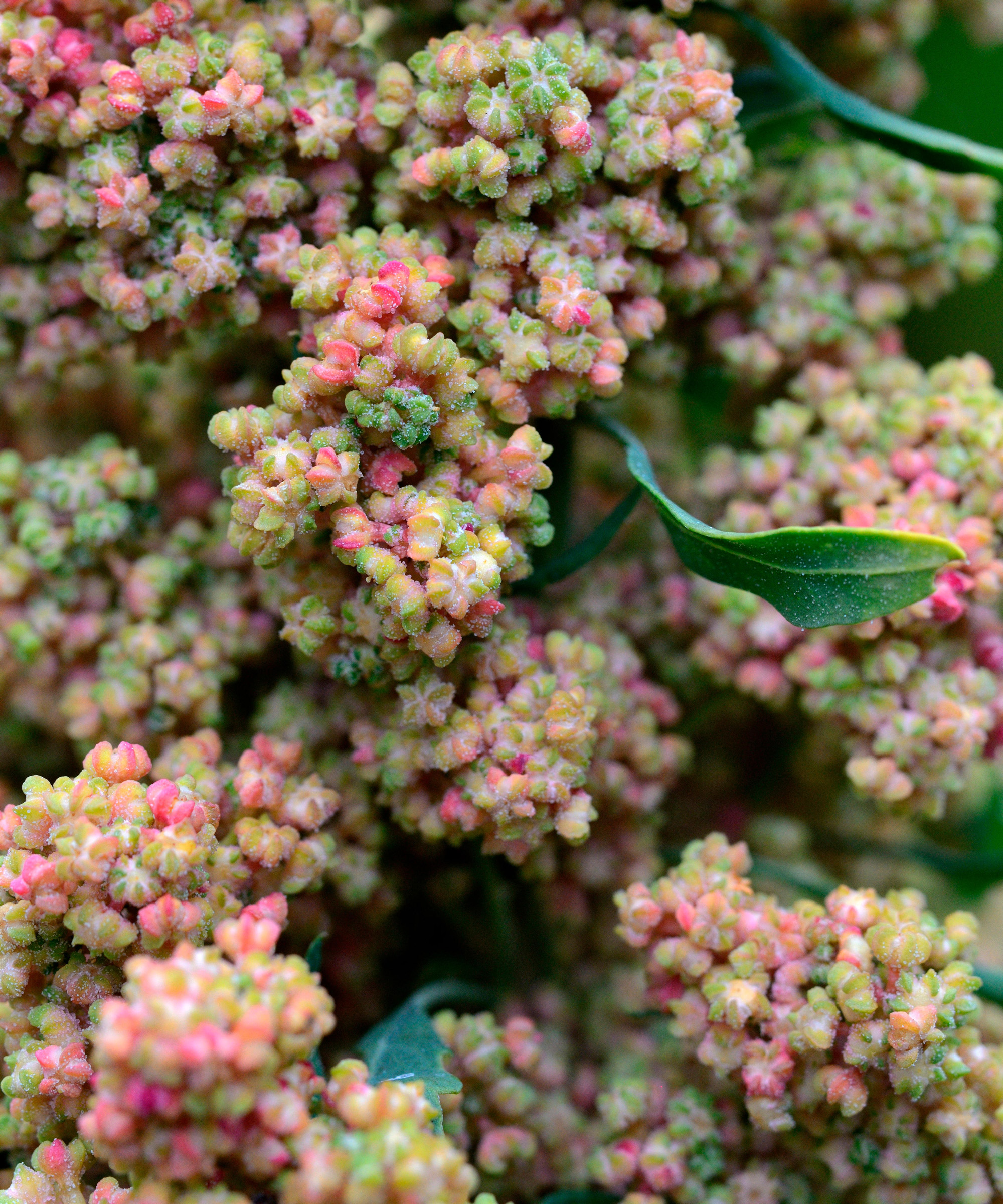
Plants are drought resistant but do appreciate occasional watering and respond with higher yields
Problems growing quinoa and how to solve them
Growing quinoa is low on problems, since they are hardy, easygoing and unappealing to some of the usual pests. One key challenge is keeping plants upright. But as long as you have added supports to give top-heavy crops a helping hand, leaning and toppling are less of an issue; keeping plants upright also makes them less of a target for squirrels and rabbits.
And if you have followed our advice about avoiding extremes of temperature and thinning correctly, you needn’t worry about reduced crop yield. Here are some of the key problems, and how to tackle them:
- Slugs/snails: These announce their presence on young unprotected plants with slime trails and holes in foliage. You can get rid of snails by treating with organic pellets, beer traps or picking off culprits by hand.
- Aphids: Check for yellow, sticky or fallen leaves. You can get rid of aphids by introducing companion plants like nasturtiums and beneficial predators like lacewings or ladybugs or spraying soapy water on leaves.
- Downy mildew: This is more of an issue in areas with heavy rainfall, and presents with discolored foliage. Reduce the risk with good airflow and spacing, and by watering plants at the base (not from above).
- Leaf miners: If you see brown trails on the foliage, this could be the culprit. Reduce the risk with lightweight horticultural mesh over the planting area so adult bugs can’t lay eggs in the first place.
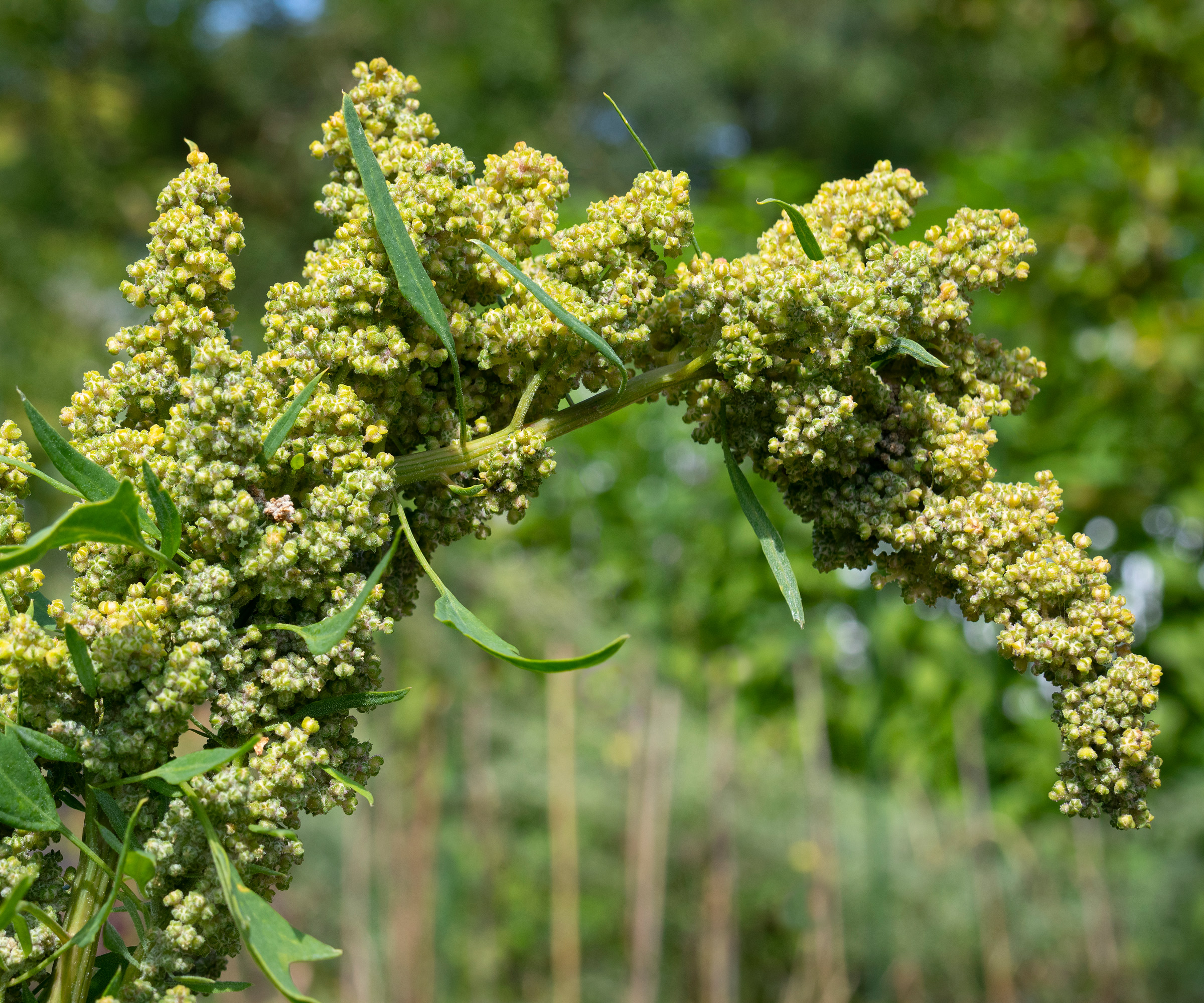
Leaning is common if you don’t support plants, but it isn’t a big problem if you add corrective stakes
Harvesting your quinoa
It takes three or four months for plants to reach full maturity. If you have sown and planted in April-May, you can expect quinoa to start flowering in June, and for burgeoning seed heads to be ready to harvest in high summer. Depending on variety, soil conditions, sun exposure and watering regime, plants can crop up until September. As Lucy Chamberlain points out, you can enjoy an immense harvest from just a few plants, so once you have nailed the basics, your cupboards could be stocked up for months.
Quinoa can make tasty plants for birds if you leave bulging seed heads in situ too long. So as the heads start to dry and leaves start to drop, this is your cue to harvest.
You have a couple of choices, and both should be carried out on a dry day, in a dry place. Either use sharp clippers to cut the quinoa stalks below the seed head, and collect the stalks in a bucket or basket. Alternatively, Lucy suggests pulling whole plants to dry out. ‘Hang by their roots somewhere warm, rain-free and airy,’ says Lucy. ‘The grains are dry once they separate from the plants.’ Strip seed from the stems and spread on a flat surface in a warm place for a bit. Store in an airtight jar or container. Don’t forget you can also eat the greens – just don’t take too many leaves while the seed heads are still developing.
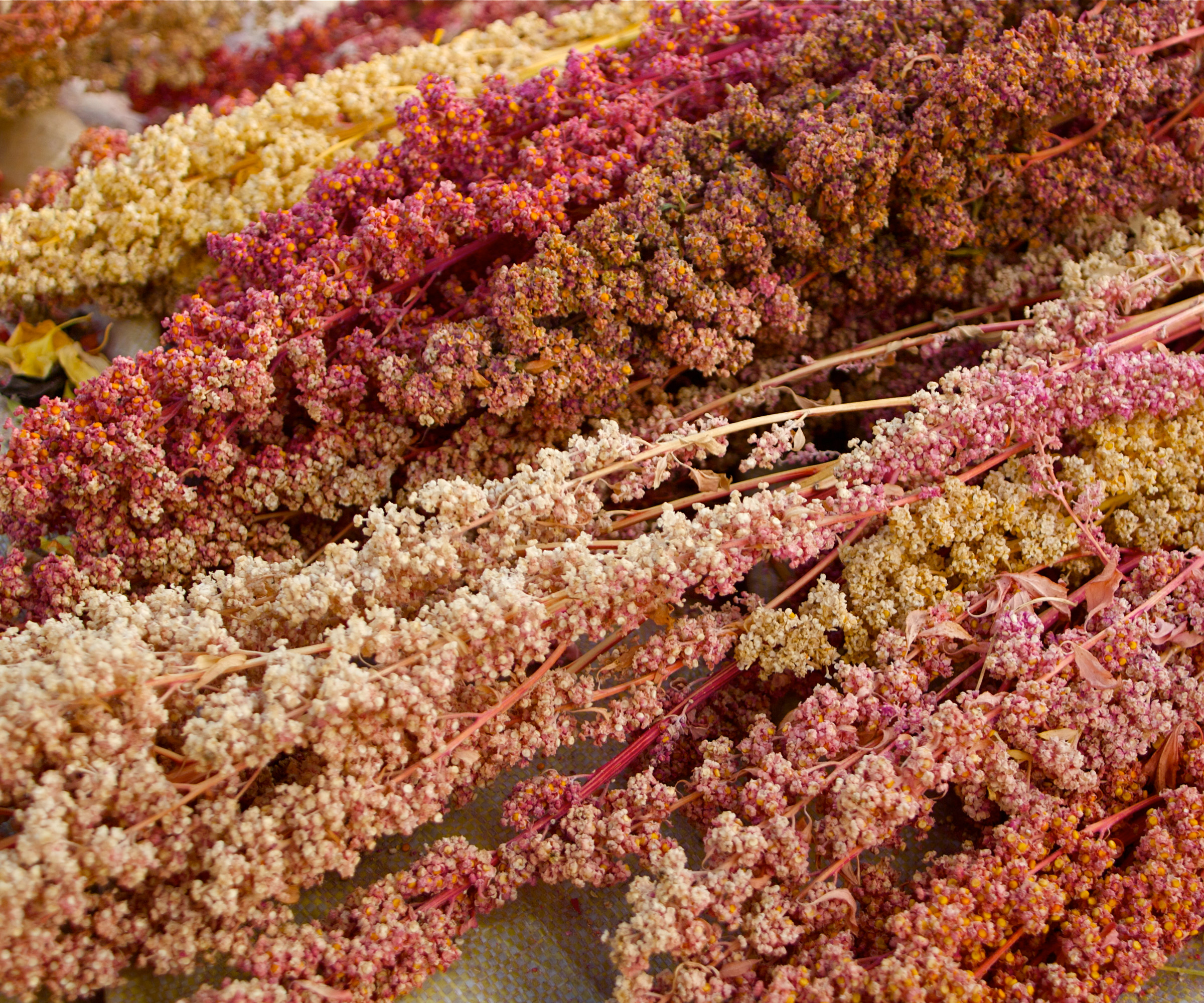
Quinoa seed heads are ready for harvesting three-four months after planting
FAQs
Can you grow quinoa in a container?
Growing quinoa in a pot is possible, but any container gardening prospects will rely on large planters, troughs or half-barrels. Containers with diameters of at least three feet are advised. As with ground-based or raised-bed options, make sure plants receive plenty of sunshine and are watered several times weekly. Add a slow-release plant feed and ensure that plants are well supported. Grow individually or (in very large containers) spaced a foot apart.
Are quinoa and amaranth the same?
Knowing how to grow quinoa may feel familiar if you have grown other members of the goosefoot family. This includes edibles like Good King Henry, plus ornamental plants such as love-lies-bleeding. Amaranth is another member of the family and, as such, it has similarities with quinoa. It is also called a pseudocereal, it is gluten-free, it is packed with protein, and it is high yielding. However, it has a lot more iron and it is lower in salt. It also has an earthy taste, whereas quinoa is milder.
Are there other edible seeds like quinoa?
After you have learned how to grow quinoa, there are plenty more edible seeds to try, although they are not all like quinoa. Some, like coriander, fennel, pumpkin and sunflower seeds, you may know. But if you are interested in collecting seeds like quinoa, Lucy Chamberlain, a veg growing expert for Homes & Gardens, suggests growing some amaranth and buckwheat. You can also try lamb’s quarters (aka fat hen), which not only has edible seeds but also leaves, stems and flowers. Finally, perilla is another leafy crop with aromatic, minty seeds.
Can I propagate quinoa from plants?
It is possible to propagate further plants from those you grow in the course of the season. Unlike crops such as herbs, where you can take plant cuttings or root cuttings, quinoa grows best from seed. You’ll want to harvest the bulk of the seeds you grow for food, but if you leave some seed heads in situ, they will self-seed and come back next year. If you want to control exactly where you grow quinoa plants, store some seeds in an airtight jar in a cool, dry place to sow and grow the following year.
Do I need to clean quinoa seeds after harvesting?
Once you have harvested your seeds, it is easy to prepare them for cooking. You don’t need any special tricks for treating seeds after growing quinoa. The main thing is to sieve them to excise chaff. Gently shake in a sieve, dry on a flat surface and store in an airtight container if not eating straight away. Before eating, soak overnight in cold water and drain a couple of times so seeds are soft and fluffy.
Sign up to the Homes & Gardens newsletter
Design expertise in your inbox – from inspiring decorating ideas and beautiful celebrity homes to practical gardening advice and shopping round-ups.

As assistant editor of Amateur Gardening magazine, Janey's gardening passion was fostered from an early age, when her amazing mum had her deadheading hydrangeas, mulching roses, and propagating strawberry plants from runners for school open days. She's also taken part in lots of conservation and rewilding projects for the RHS and TCV as a way of exploring her horticultural horizons.
-
 7 of the best tomatoes for growing in pots - expert growers pick their top varieties ideal for large harvests from containers
7 of the best tomatoes for growing in pots - expert growers pick their top varieties ideal for large harvests from containersYou can enjoy bumper homegrown harvests in small spaces
By Drew Swainston Published
-
 Drew Barrymore creates a 'balanced' kitchen in 4 easy steps – her rules will make your small, compact countertops feel beautiful
Drew Barrymore creates a 'balanced' kitchen in 4 easy steps – her rules will make your small, compact countertops feel beautifulDrew proves that with the right styling (and chic appliances), you can make even the smallest of kitchens look harmonious
By Hannah Ziegler Published